MXA RETRO TEST: IS THE 2001 VOR 503MX THE GREATEST FOUR-STROKE EVER?
We get misty-eyed sometimes thinking about past bikes we loved and those that should remain forgotten. We take you on a trip down memory lane with bike tests that got filed away and disregarded in the MXA archives. We reminisce on a piece of moto history that has been resurrected. Here is our test on the 2001 VOR 503MX.
QUESTION ONE: WHAT IS A VOR?
A: Not every American has heard of a VOR. Even fewer have ever seen one. And, the number of U.S. racers who have thrown a leg over a VOR is in the hundreds, even 100 would be an overstatement. The VOR is an Italian-built four-stroke and is the most exotic production-based thumper ever built.
Starting life as the brainchild of the Vertemati brothers, the bike was actually put into production by VOR. Although VOR’s collaborative effort with the Vertematis came to an abrupt end, the bike still bristles with the brother’s trademark features.
QUESTION TWO: WHAT’S SO EXOTIC ABOUT A VOR 503MX?
A: It would be simpler to ask, “What’s not exotic about the VOR 503MX?” Take a closer look at the bike. Do you see the machined I-beam swingarm? Backwards kickstarter? Gear-driven camshafts? Bolt-together frame? Paioli/Kayaba forks? Rectangular backbone? Hydraulic clutch? Gear-driven cam (with TDC window)? Cassette transmission? These features are on a different rung of the four-stroke ladder from what is normally offered.

QUESTION THREE: IS IT A VERTEMATI CLONE?
A: Yes and no. It started life as a Vertemati, but after their falling out, the V-brothers went back to their workshop to build a new bike, while VOR began a steady refinement of what the V-boys left behind.
The breakup was probably a good thing in the long run. The Vertemati brothers are artistic whittlers of aluminum and chromoly, but when it comes to motorcycle design, they leave a lot to be desired. The first VOR 503s were accurate renditions of what the Vertemati brothers wanted, and those bikes were a disaster. The shock’s rising rate was more like a falling rate. The front end had a push that only a Zamboni could match. The three-speed gearbox (with neutral on the bottom) sent riders over the bars at an alarming rate. The dimensions of the bike left most riders wondering if the blueprints had been Xerox’ed at 110 percent by accident. The gas tank’s width spread the rider’s legs apart at alarming angles. And, the bike hit the scales at over 260 pounds (while claiming to weigh 235).
It’s true that the VOR 503MX started out as a Vertemati clone, but, thankfully, VOR came to its senses and began fixing the flaws of the original 503. VOR Motori in Monza, Italy, had bought the rights to a white elephant. And they have been spending the last three years removing every sign that the V-brothers ever existed.
As for the Vertemati brothers, they displayed an all-new bike at the Italian motorcycle shows this winter, but their record of producing bikes is often less than a dozen units a year, so don’t hold your breath.
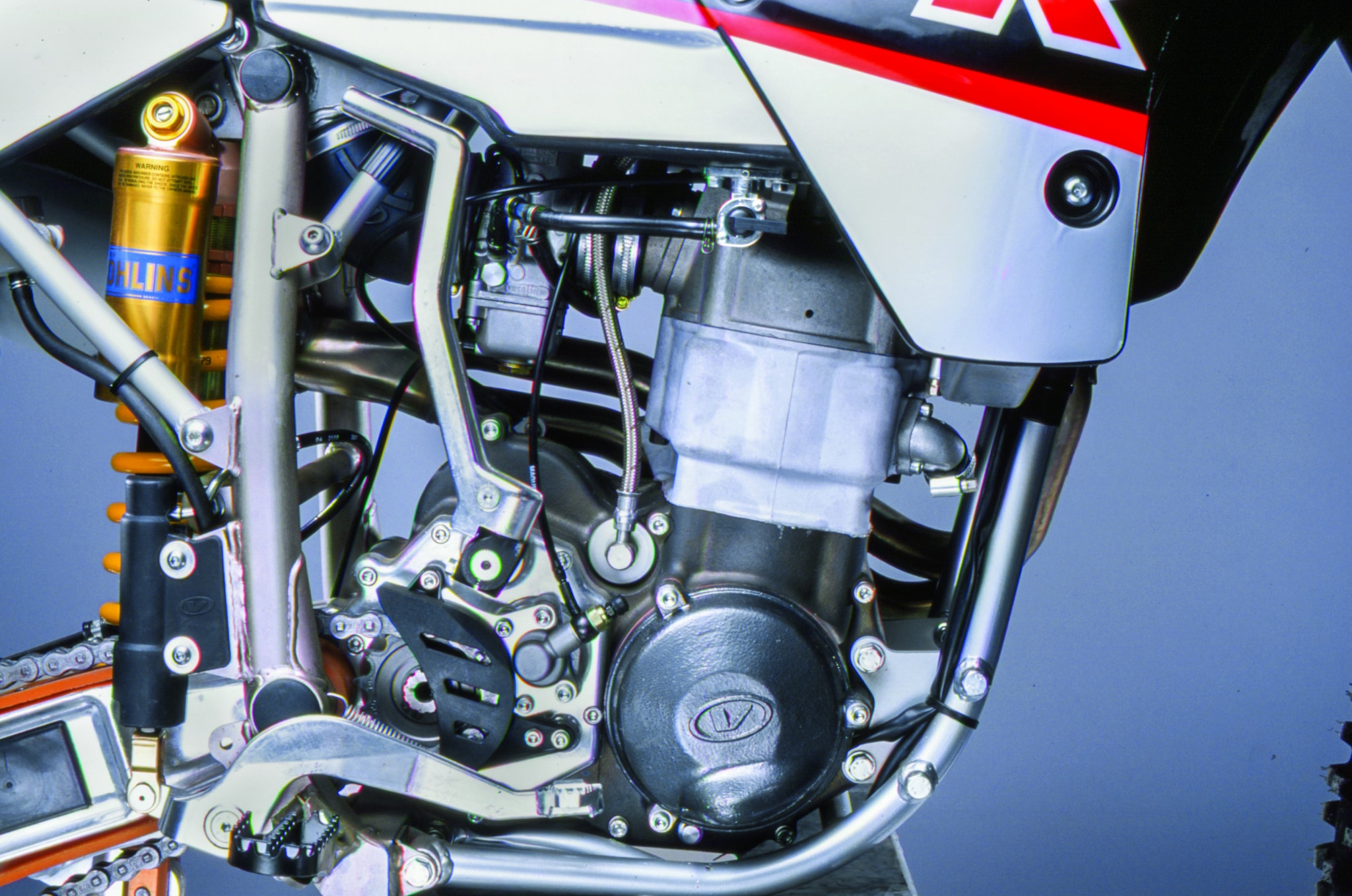
QUESTION FOUR: WHAT HAS VOR CHANGED ON THE 503MX?
A: It would be simpler to ask, “What hasn’t VOR changed on the 503MX?” With a bike as rare as the VOR 503MX, it’s almost a waste of time to talk about updates, since the majority of motocross racers have never even seen a VOR; however, you can take our word for it, VOR has made significant changes to the 503MX (there is also a 400MX) over the last two years. Here’s a quick list of changes since VOR took the Vertemati name off the gas tank.
Radiators: The radiators were mounted farther back and closer to the frame in 2000 to slim down the ergos.
Fuel capacity: Gas tank capacity was increased to 2.2 gallons, and the tank was narrowed.
Suspension linkage: The shock’s rising rate was redesigned in 2000, and a shorter Ohlins shock was added in 2001.
Handlebars: Taller handlebars were added in 2001.
Exhaust pipes: The head pipes were tucked in closer to the engine.
Frame: Frame rigidity was increased and the sub-frame lowered by 10mm in 2001.
Frame geometry: The head angle and wheelbase were changed to improve cornering.
Clutch: A hydraulic clutch was adopted two years ago.
Footpegs: The pegs were widened and strengthened.
Forks: The 46mm Paioli forks were upgraded (thanks to a joint venture between Kayaba and Paioli).
Weight: Among VOR’s claims is an overall weight savings of 8 pounds in 2000 and 6 pounds in 2001.
Price: The 503MX model retails for $6900 (a $600 reduction in price).
QUESTION FIVE: IS THE 503MX FAST?
A: Yes, if you ride it fast. Conversely, it can also be slow. The VOR 503MX has undergone some major changes in jetting, cam timing and crankshaft inertia that have moved the power higher in the rev range in comparison to previous models. The original 503 ran like a big-block Chevy engine. The new powerband is more Maserati. It has mid-and-up power that works best when revved.
Is it faster than a YZ426? No. Even though it has more displacement than the YZ426, it doesn’t have the explosive grunt that launches the Yamaha out of every corner. The VOR depends on momentum and its healthy upper-end output. On a fast track, the VOR is a rocket ship, but from corner to corner it gives up grunt to the YZ-F. It is definitely raceable. It has competitive power, especially from the middle on up. MXA test riders liked this engine, but given our druthers, we prefer the older style of power with its chug-a-lug powerband to the slicker 2001
powerband.
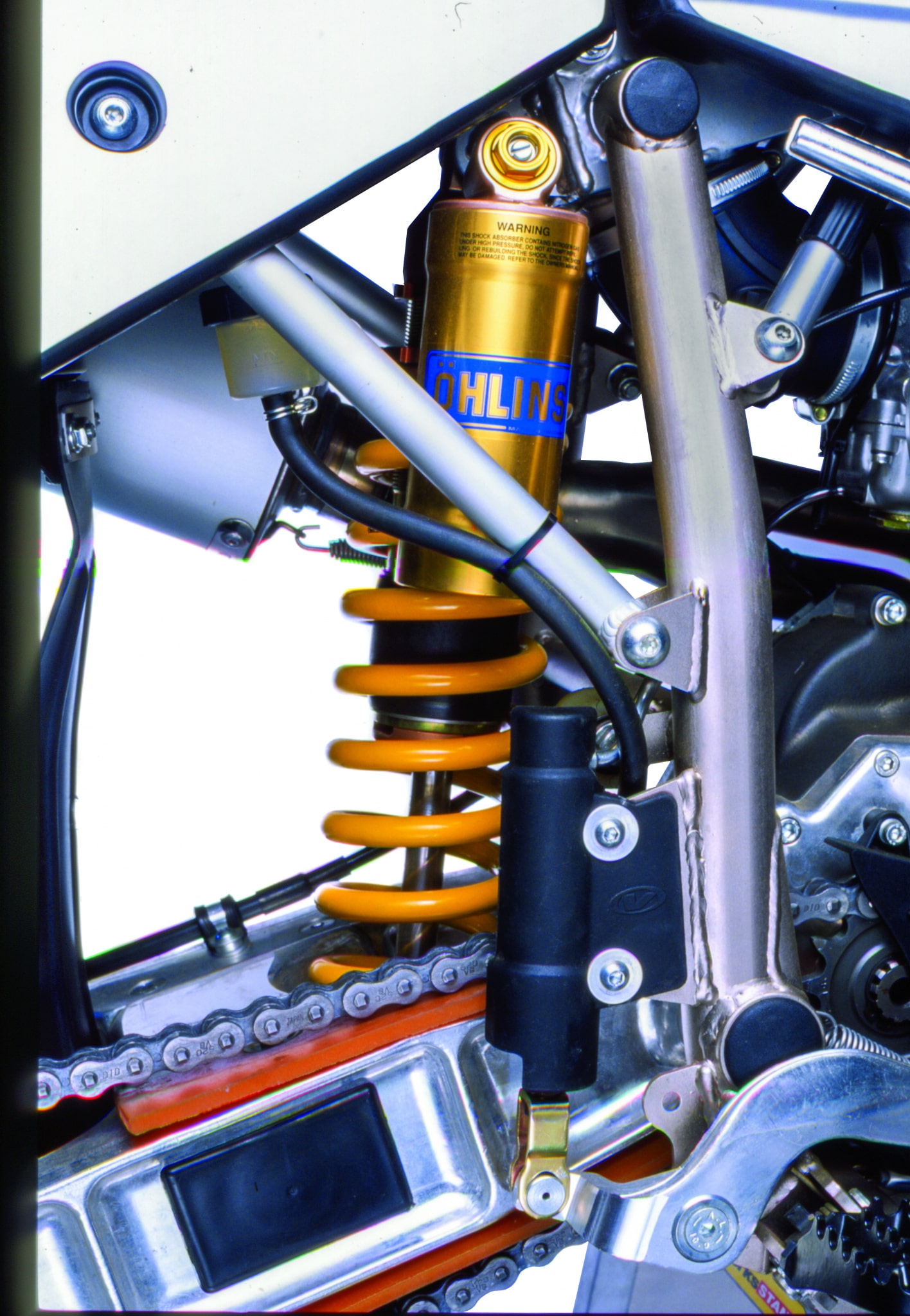
QUESTION SIX: DOES IT SHIFT?
A: The five-speed transmission works decently. The VOR tranny doesn’t have the notchy feel of most Euro bikes, but you do have to shift before getting too high in the rev range. Our only tranny complaint was that we could accidentally hit the shift lever when landing from jumps.
QUESTION SEVEN: HOW DOES IT HANDLE?
A: As much as we hate to stereotype a bike, this is an Italian-built machine and thus it has, dare we say it, Italian handling.
What defines Italian handling? (1) Understeer. You turn the handlebars, but the front wheel ignores your input. After a small lag, the bike responds. You look to the inside of the corner, but the bike drifts 3 feet farther outside. (2) Stinkbug. Even if the forks weren’t too soft, which they are on the 503MX, most bikes with Italian handling feel high in the rear and low in the front. Every test rider had his right boot bounce off the rear fender the first time he tried to climb on board the 503. The rear end sits high. (3) Straight-line stability. Italian bikes love to go straight. They love it so much that cornering requires a commitment and special dispensation from the Pope. (4) Wheelbase. Most Italian-style bikes have long wheelbases, rearward weight biases, slack head angles, tall centers of gravity and a casual approach to tight turns.
The VOR 503MX isn’t a bad-handling bike—for a bike with Italian handling. It is easier to turn than last year, and once you learn to anticipate its intended track, you can revise your mental image to match it.
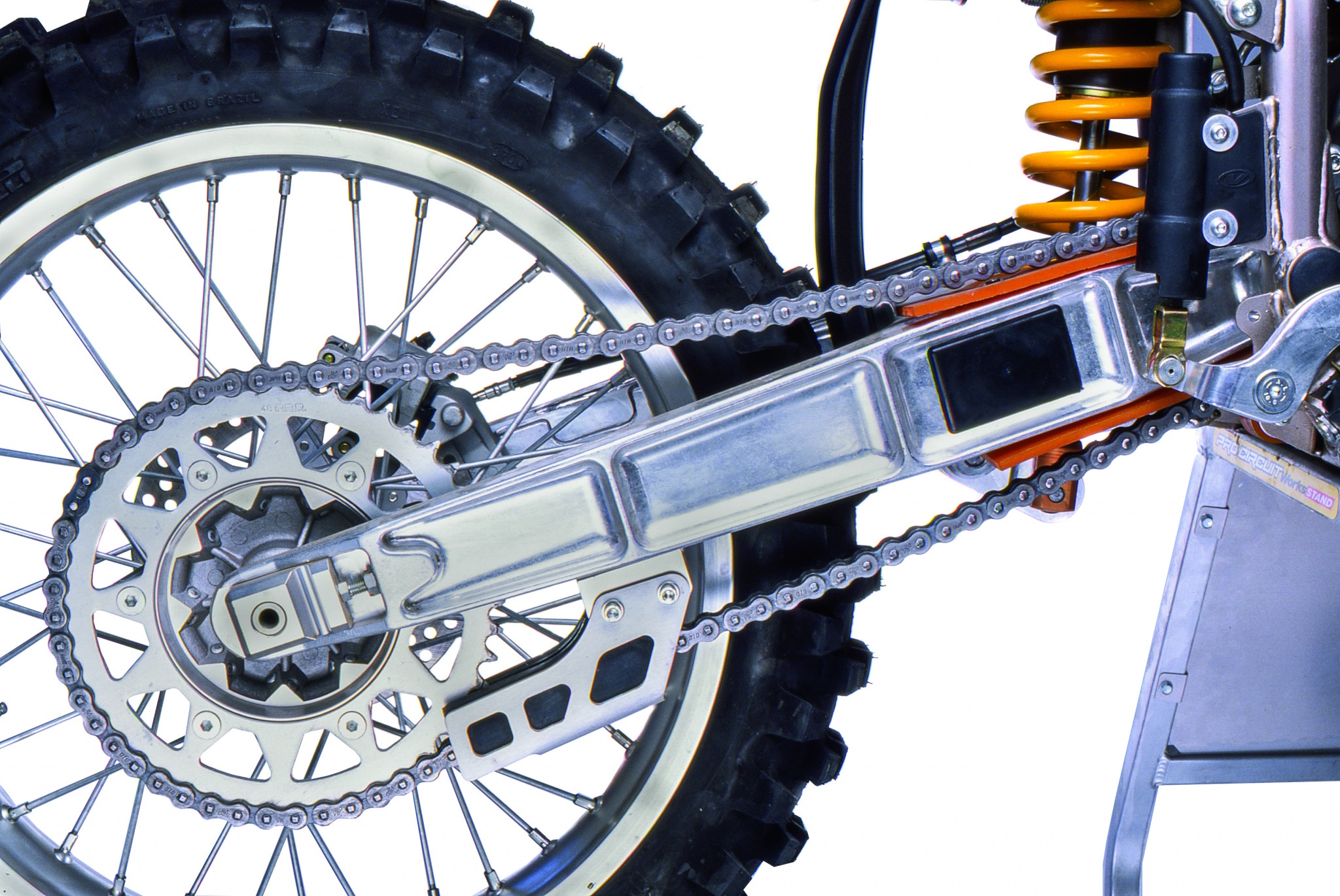
QUESTION EIGHT: WHAT ABOUT THE SUSPENSION?
A: Three years ago, the VOR, then called a Vertemati, came with 50mm Marzocchi Magnum forks and an Ohlins shock. These were good units individually, but the big Italian frame didn’t do much to enhance their compatibility. When VOR switched from right-side-up Zokes to upside-down Paioli forks, the extra rigidity actually helped the bike (although the Paiolis were rigid in every sense of the word).
This year, Paioli and Kayaba formed a joint partnership to produce a set of forks that unfortunately are too soft to have a chance of working. The softness makes them hang down in their stroke. Hanging down in the stroke makes them harsh. And the harshness makes us wish for the flexy, but movable, 50mm Marzocchis.
The forks are the biggest hindrance to the VOR 503MX’s performance, while the rear suspension is actually getting better. Shortening the shock, changing the linkage and revising the frame geometry finally put the Ohlins-equipped rear suspension in the ballpark.
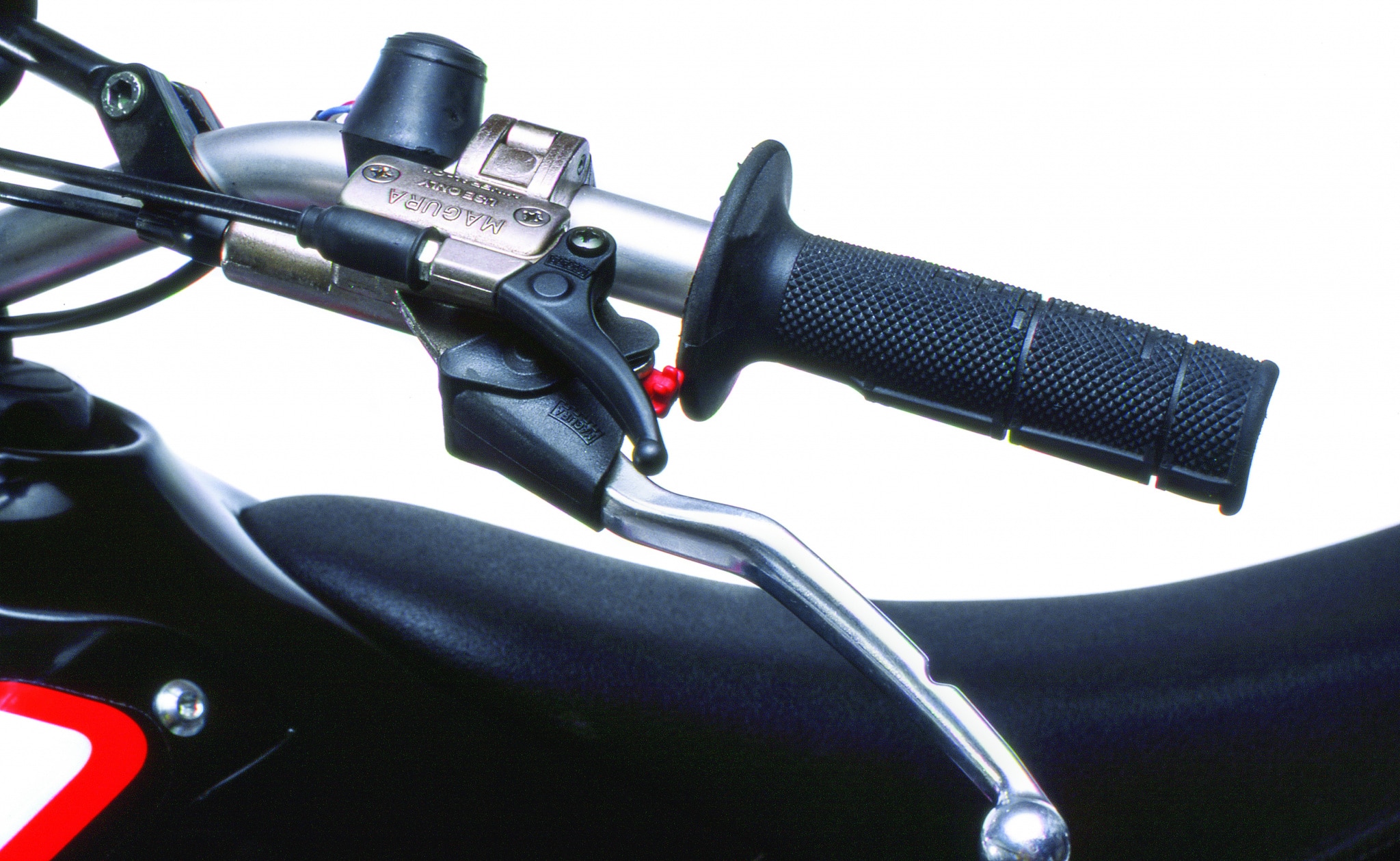
QUESTION NINE: WHAT DID WE HATE?
A: The hate list:
(1) Kickstarter: There wasn’t a single MXA test rider who liked the forward kickstarter. It’s unnatural.
(2) Hot start: The 38mm Dellorto VHSB flat-slide carb is a little touchy. A hot-start button would be a big help when the engine is hot.
(3) Gas tank color: We hate black gas tanks. We also hate little tiny gas caps. The VOR is as black and the cap is as tiny as they come.
(4) Ergos: This bike is so big that you feel like you are perched on top of it. It makes you feel vulnerable. It needs to be preshrunk.
(5) Airbox: What airbox? It is too reminiscent of a Husaberg.
(6) Weight: VOR claims to have knocked off over 14 pounds in the last two years; they have 14 more to go!
(7) Rear brake: The rear brake pedal hits against the footpeg. No biggie, unless it hits against the footpeg before you have stopped.
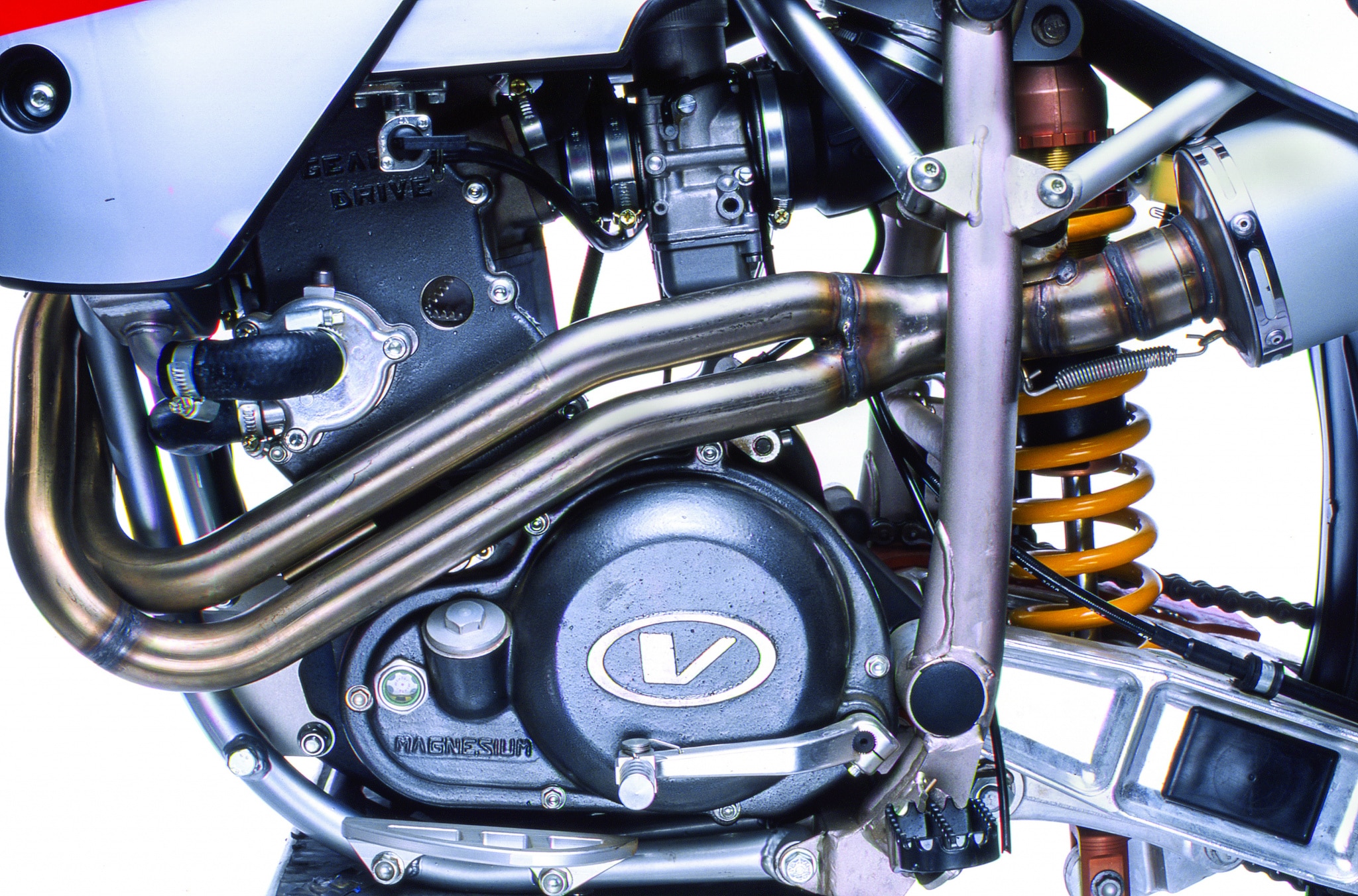
QUESTION 10: WHAT DID WE LIKE?
A: The like list:
(1) Color: It’s black. The sinister connotations that black evokes make you the baddest dude at the track. The black and silver motif stands out.
(2) Exhaust pipes: The dual exhaust pipes are tucked in tightly and are out of the way.
(3) Brakes: Excellent front brake.
(4) Clutch: It’s hydraulic. We like it, use it and trust it.
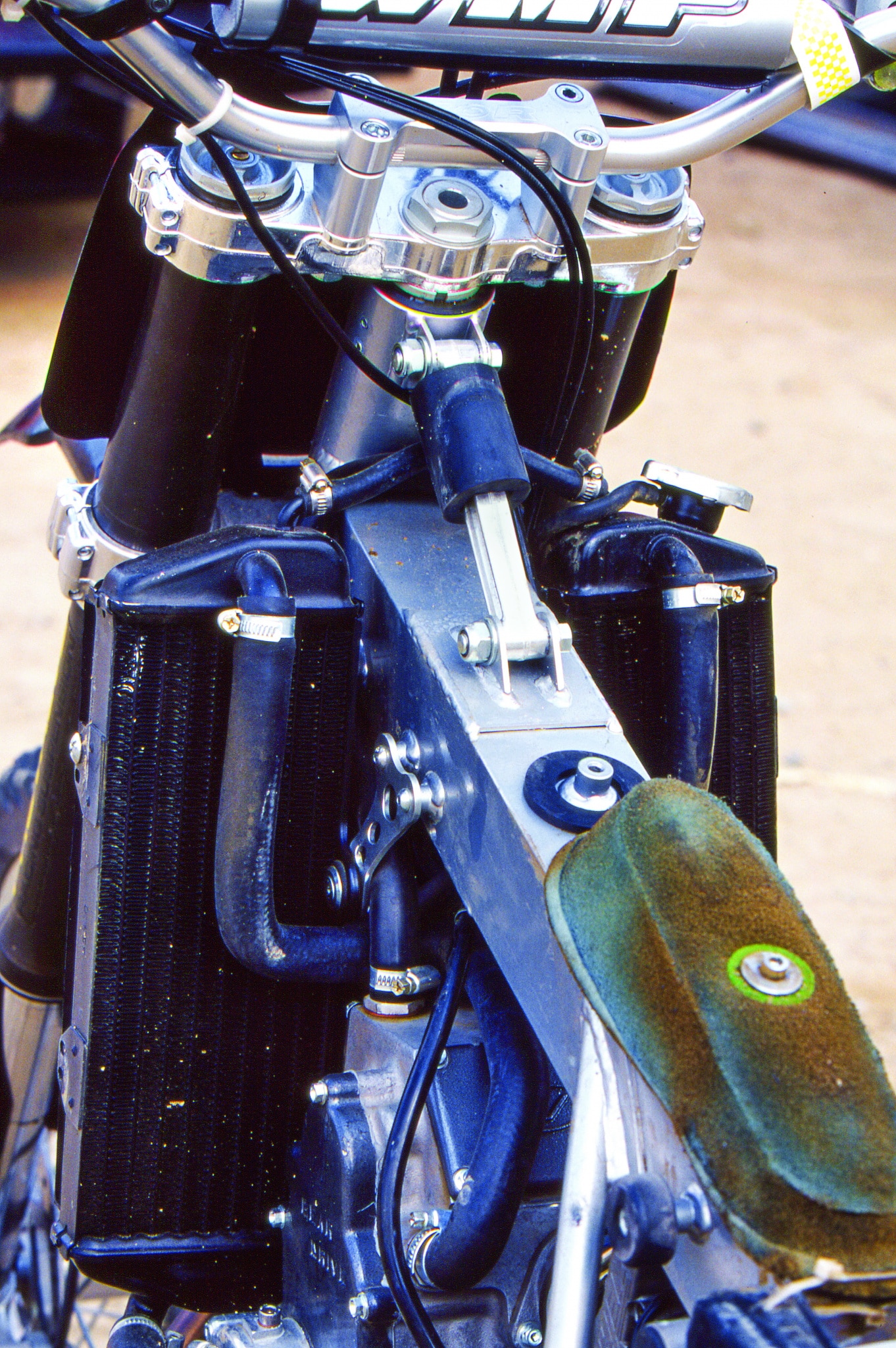
QUESTION 11: WHAT DO WE REALLY THINK?
A: This is an extremely exotic four-stroke motocross bike. It is the Lamborghini of motocross bikes. And just as with an Italian automobile, its uniqueness adds to the aura of coolness but detracts from the overall package. If we were making the VOR (instead of testing it), we’d weld the bolt-together frame, turn the kickstarter around, spec true-to-life Kayaba forks (instead of second-cousin Kayaba/Paioli clones), go for a gruntier powerband and downsize the chassis.
Is the VOR 503MX the greatest four-stroke ever? No,not by a longshot. However, as is, the Vertemati 503MX is the ultimate expression of four-stroke status. It has all the makings of the best four-stroke motocross bike made, but the all pieces need to be rearranged.


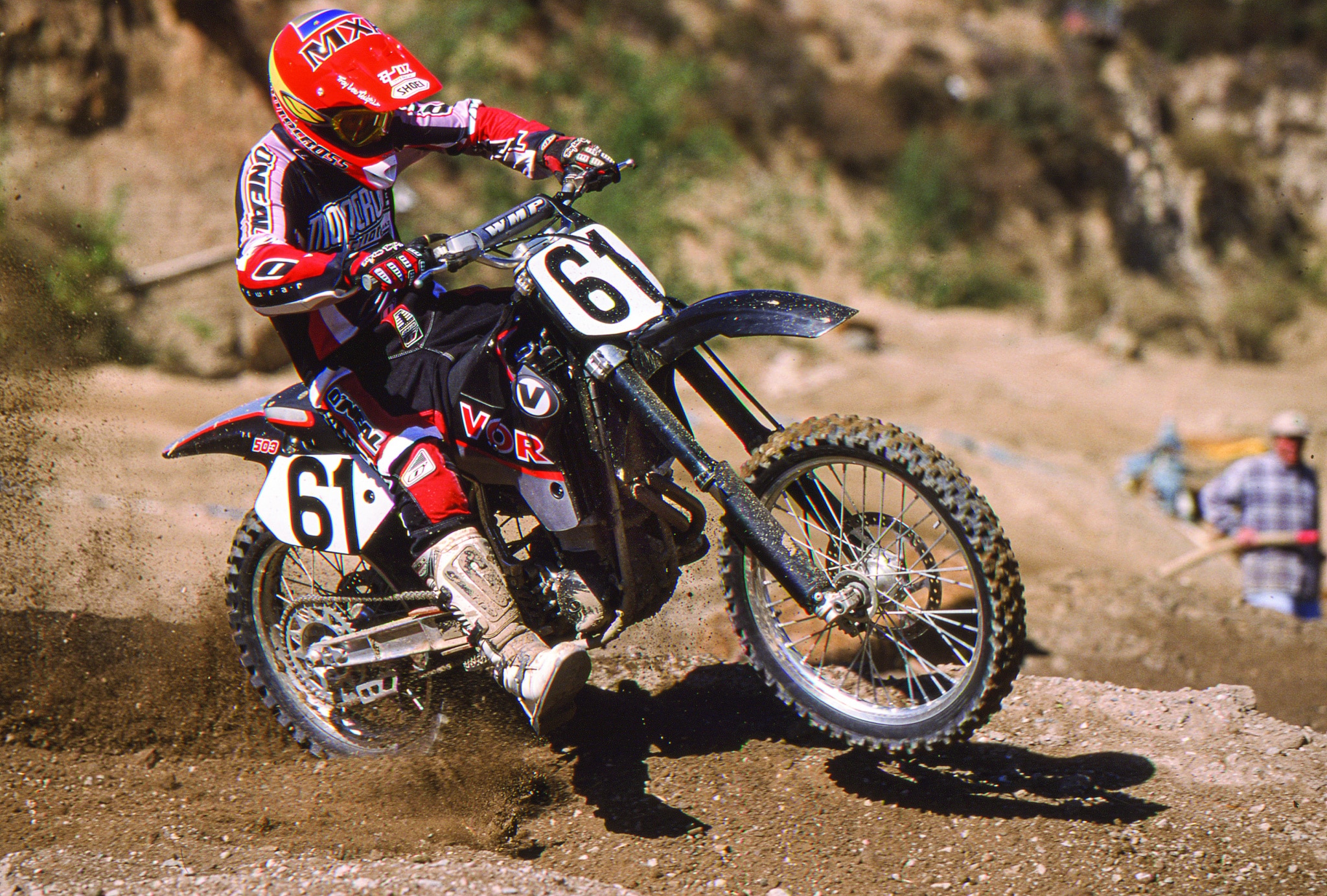





Comments are closed.